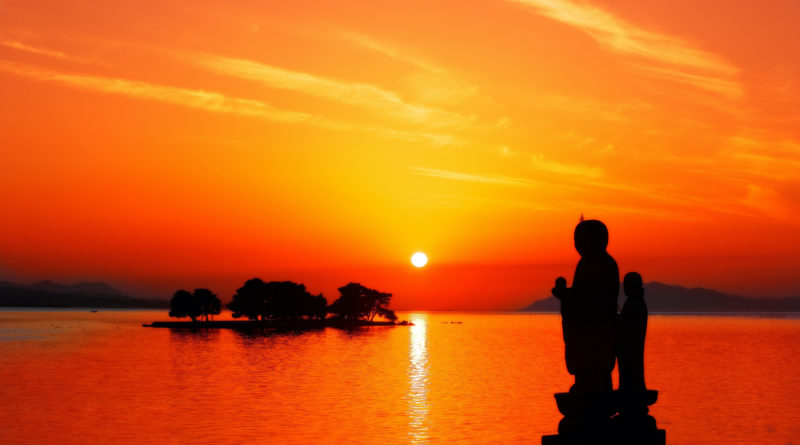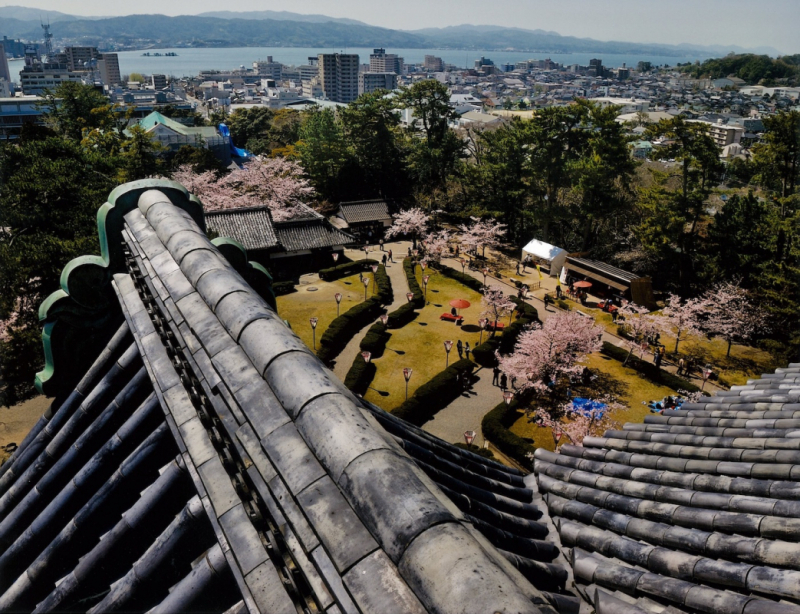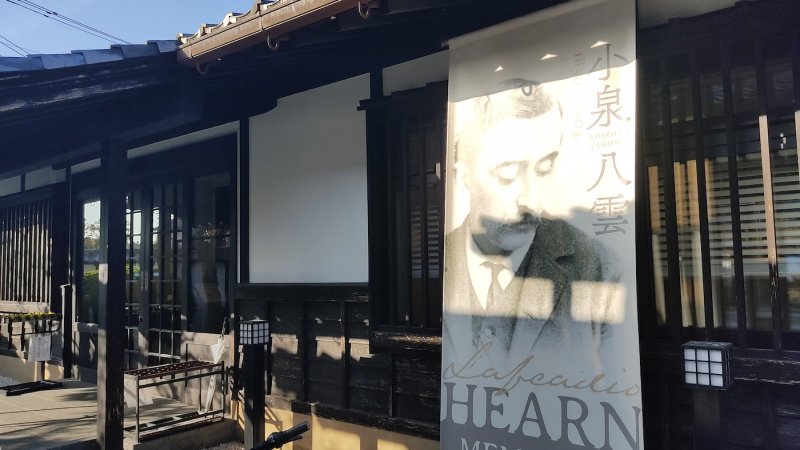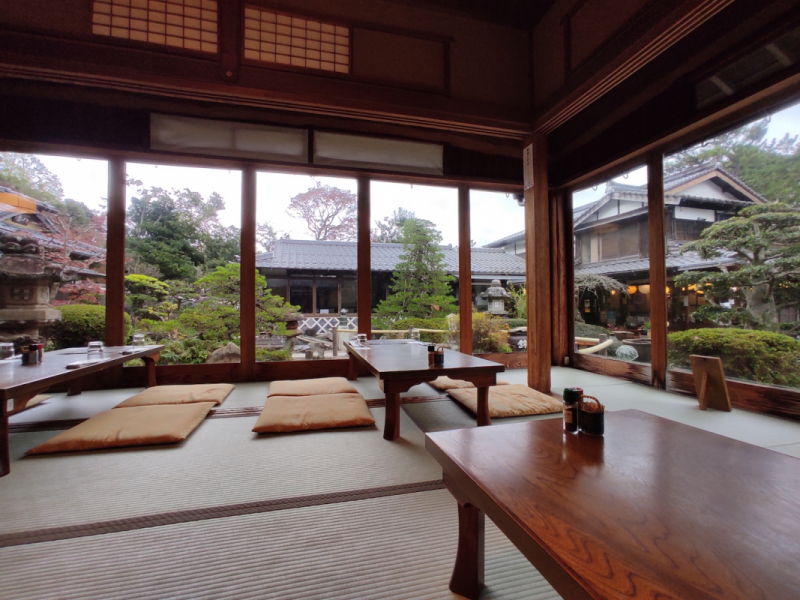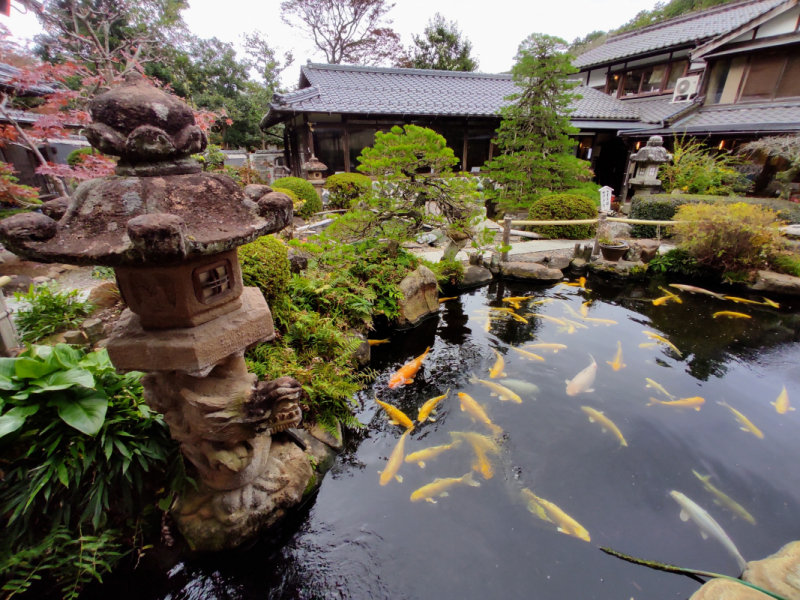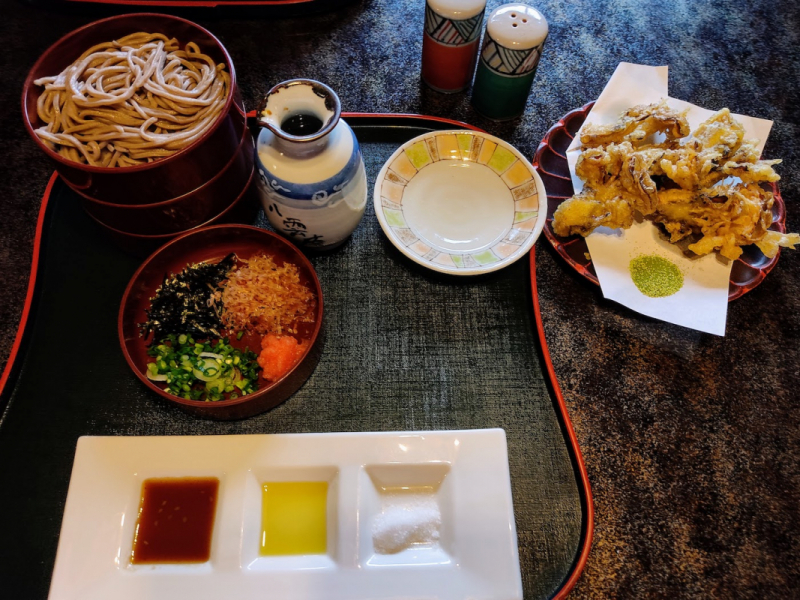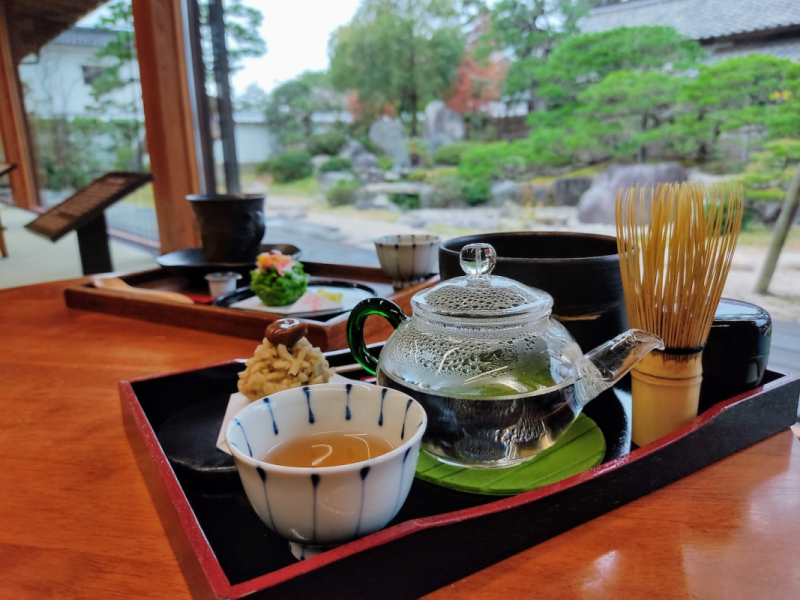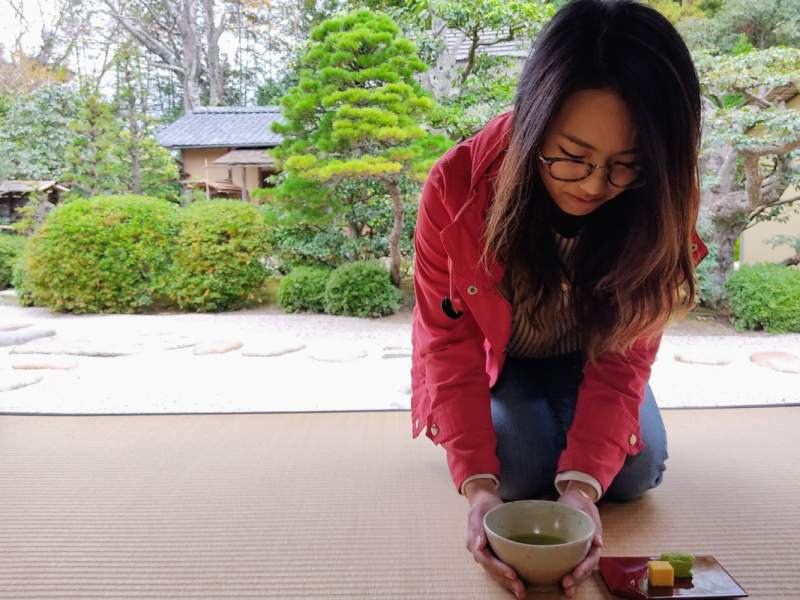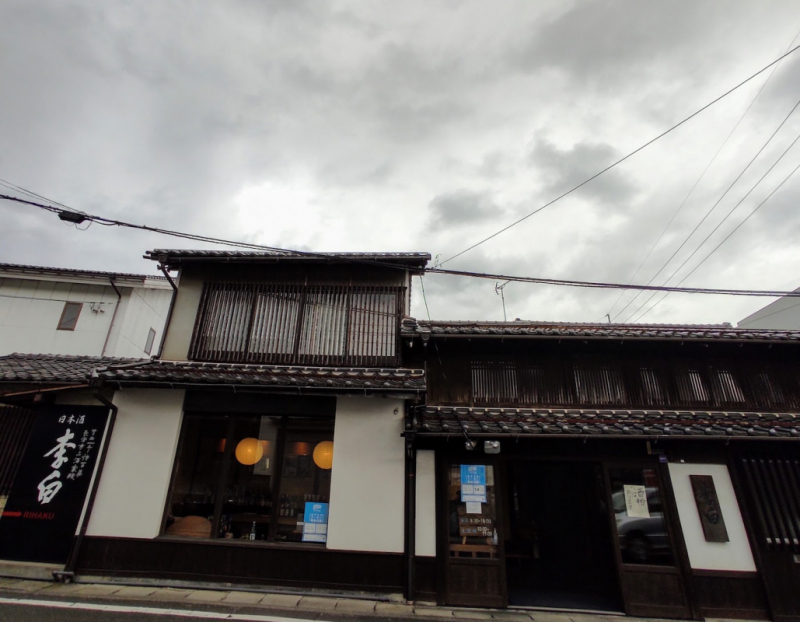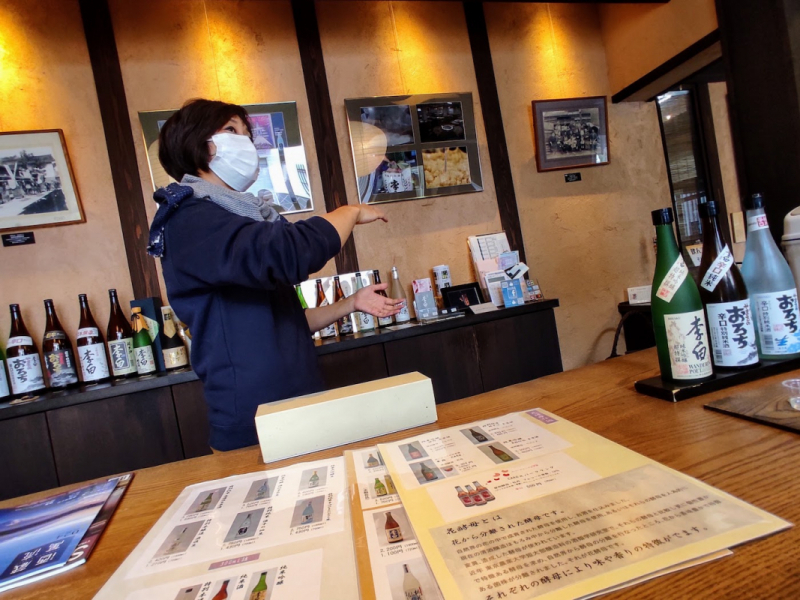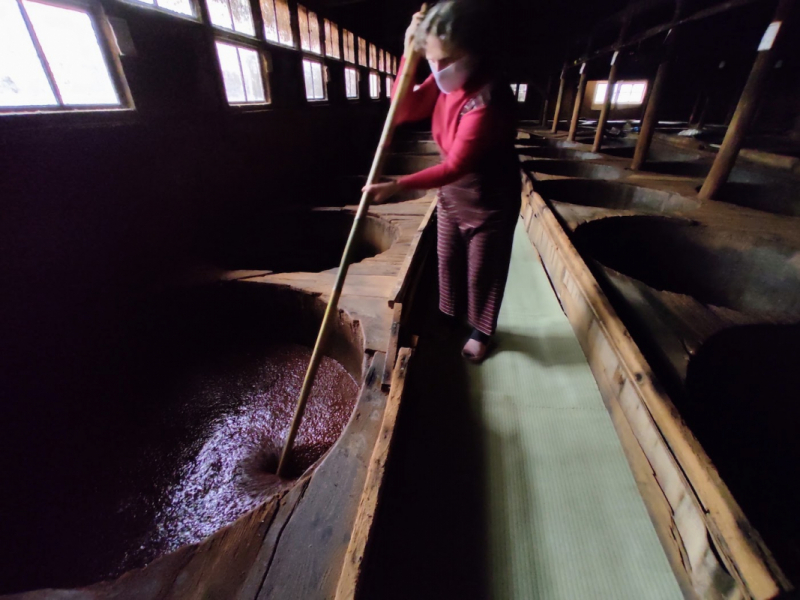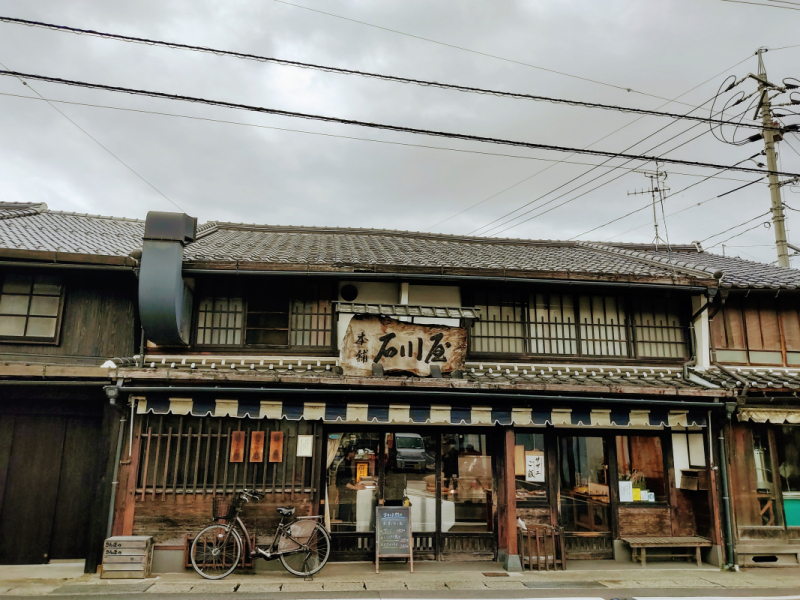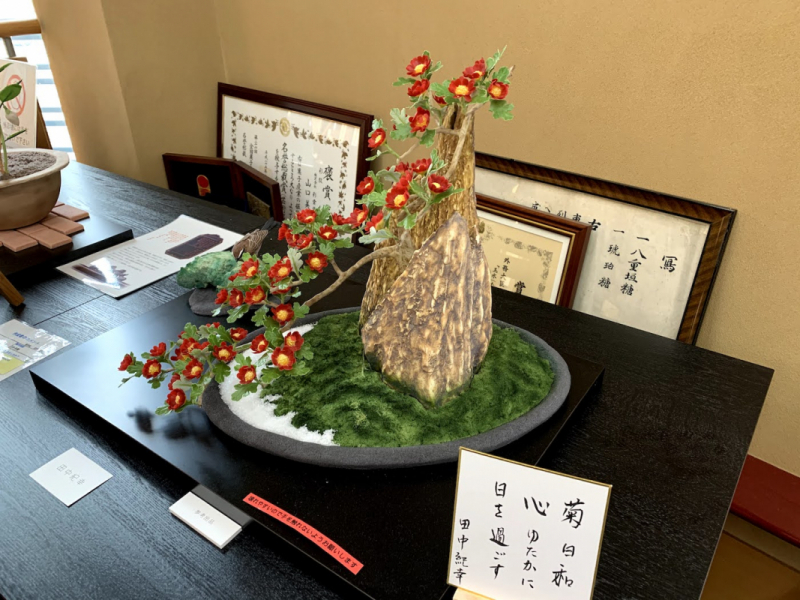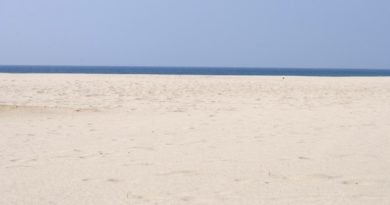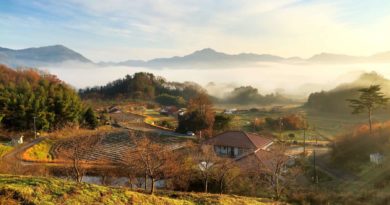Let culture wash over you in Matsue
Matsue is one of Western Japan’s best kept secrets. The castle city on the edge of Lake Shinji near the Japan Sea coast in little-visited Shimane Prefecture is an excellent place for the Japanophile to escape the tourist crowds.
Matsue has more than enough “sights” to keep a tourist busy for a full day, but those that choose to linger can experience Matsue as a place where traditional culture is still very much a part of everyday life and where life moves at a very civilized pace.
The Historical Castle District
The main draw for most visitors to Matsue is its castle, and rightly so. Having escaped the ravages of war and natural disasters since its construction at the start of the 17th century, its distinctive black keep is one of only twelve remaining originals in Japan.
Thanks to the fact that Matsue is still a relatively low-rise city, the view from the top of the keep over the swooping winglike gables that give it the nickname of the “Plover Castle” and out to Lake Shinji is pleasingly uninterrupted. Beyond the keep, the grounds, moat and surrounding streets, lined with former samurai residences, have been very well preserved.
In this area, along Shiomi Nawate street, you’ll find a museum dedicated to one of Japan’s best known foreign immigrants, Lafcadio Hearn, a writer of Greek-Irish descent who is thought to be first foreigner to legally acquire Japanese nationality via naturalization. Hearn arrived in Matsue over 130 years ago, but followed a career path still common among immigrants from Europe today, teaching English. He only lived in Matsue for relatively short time, but his time there had a great impact on him and his influence (and image) is found all over the city.
The museum which is located next to his former residence traces the entirety of the writer’s itinerant life and the excellent English explanations make it well worth a visit. Reading Hearn’s evocative ode to Matsue “The Chief City of the Province of the Gods”, found in the book “Glimpses of Unfamiliar Japan“, on arrival is highly recommended. While much has changed since his day, the descriptions of life in the city, penned with great affection, help the imagination fill in the gaps between the vestiges of the past that remain.
It is easy to while away most of a day viewing the castle and exploring the samurai district. Indeed, why hurry? Take some time to sit with your eyes closed by the path lined with gnarled black pine trees, listening to jolly boatmen sing as they ferry tourists around the castle.
Step across street and into the beautiful former samurai residence and garden that now houses Yakumo-an (named for the Japanese name – Yakumo Izumo – which Hearn took after marrying the daughter of a local samurai daughter) where you can enjoy Izumo soba noodles that are a speciality of the region.
Yakumo-an is the only place in Matsue that offers a vegan wariko-soba option (pictured below, though the accompanying mushroom tempura is lacto-ovo vegetarian rather than vegan) which contains animal-free toppings and alternative dipping sauces.
Dip into Matsue’s unique tea culture after your meal with intricately crafted wagashi seasonal Japanese sweets (made on site by one of the best wagashi-makers in the country) and Japanese tea in Kiharu Cafe which is attached to the Matsue History Museum.
[Vegetarian and vegan diners will also want to check out Green’s Baby which has several Tex-Mex dishes on its menu and hammocks upstairs.]
For a more formal tea ceremony head up the small hill to the Meimei-an tea house and garden, built by the feudal lord Fumai Matsudaira in 1779, credited with fostering Japanese tea culture among people of all classes, evidence of which is still seen today.
Those keen to follow in the footsteps of Hearn shouldn’t miss Jozan Inari Shrine, a favorite place of his. Not as Instagram famous as Kyoto’s Fushimi Inari, it is far quieter and still packed with hundreds of statues of kitsune foxes, guardians of Inari, the god of rice. Hearn was fascinated by Japanese folklore in which trickster foxes feature heavily. This perhaps explains why a local guide, who I once insisted show me the shrine, was clearly uncomfortable, telling me that parents used to forbid children from going there.
Local culture East of the castle
Among the more modern streets west of the castle and Meimei-an, you still find buildings and businesses dating from over 100 years ago.
Sake brewery Rihaku dates from 1882 and has been the recipient of many awards. Named after an 8th century Chinese poet who is said to have proclaimed that one bottle of booze would fuel 100 poems, Rihaku takes pride in brewing sake that can go with any food and can be drunk through the night without tiring of the taste; a quality said to be important to local customers.
I urge even those who’ve always thought that sake isn’t really their thing, to drop in and sample their signature brews (many of which have appropriately poetic names such as Wandering Poet or Dreamy Clouds); I think you will be pleasantly surprised.
The Moriyama family had already been making soy sauce for 7 years by the time Rihaku started making sake. The Moriyama Shoyu factory, recognizable from its distinctive red walls, is a rare thing in 21st century Japan, a place that abandoned the nowadays more common stainless steel tanks to return to using kioke wooden barrels. The microorganisms that live in the wood of the barrels are essential to giving the soy sauce the rich, savory flavor known as umami that stainless steel tanks just can’t compete.
Current company president, Ken Moriyama’s German-born wife Emi shows us up to the 2nd floor. The first thing that strikes me is the pungent, though not unpleasant, smell, and, as my eyes adjust to the low light an impressive sight of around 100 huge cedar barrels that are as old as the business itself, many of them filled with fermenting soy moromi mash in various at various stages of their 2-3 year journey to being ready for pressing.
Although it is fine to drop in at the factory store during business hours, I highly recommend called ahead of time to arrange a tour of the factory; it’s absolutely fascinating, and, with the barrels reaching the end of their 150-year-old life and few people remaining in Japan who can make them, perhaps something we may some of the last people to experience.
As you make your way back towards the castle, you are bound to notice Ishikawa-ya fishmonger.
Another place that has been trading for over a century, this is possibly the most fun I’ve ever had in a fish shop. The building oozes with old world charm, the owner is very welcoming and, although you may not be able to take a whole fish home with you, there are some extremely fresh and very reasonably prices sushi and other bento lunches on sale.
Beyond the samurai district
Beyond the samurai district Matsue has much to offer the traveler who likes to take their time, those who like to wander and, like Hearn, enjoy the “pleasure of looking at curious things”. Matsue is highly compact – the castle is only a 2km from the main railway station – and as in Hearn’s day, “One may ride, walk, or go by boat to any quarter of the town; for it is not only divided by two rivers, but is also intersected by numbers of canals crossed by queer little bridges curved like a well-bent bow.” The boats available to visitors may now be limited to the tourist craft, but the city is ideally suited to exploring on foot or by bicycle.
In the Kyomise area is sandwiched between the Kyobashi and Ohashi rivers and bookended by two sake breweries, Kokki Shuzo to the east and the very welcoming Yoneda Shuzo to the west.
Here you will find all manner of local stores selling everything from handcrafted knives to locally fired ceramics and an eclectic range of small cafes and eateries. Japanese Tea Cafe Scarab is the place to go if you are looking for matcha-laced sundaes and desserts.
Representing Matsue’s growing coffee culture are Coffee-kan, a quaint riverside kissaten coffee shop which serves hearty breakfasts from 8am, and Little Court Coffee is one of Matsue’s new wave of stylish cafes serving excellent latte and other espresso drinks.
Heading south across the Ohashi Bridge, inside one of the original pillars of which a poor man named Gensuke is said to have been interred to appease the gods and prevent flooding, takes you into Tenjin-machi described by Hearn as “the Street of the Rich Merchants”. Times may have changed, but the Nakamura Chaho tea shop, open since 1884, and Keigetsu-do, which has been making wagashi sweets for over 200 years, still do a brisk trade.
Saiun-do, another long-running wagashi shop, has some incredible wagashi art on display and you can sit down and enjoy wagashi with tea. On the 25th of each month shops in this area open up onto the street for the Tenjin Festival and the area recovers some of the vibrancy of old, though it’s recommended not to leave it too late as the elderly locals are early risers.
A city of spectacular sunsets
As the sun starts to edge towards the horizon, locals and visitors alike migrate towards the shore of Lake Shinji. Past the cute bunnies frozen in sculpture hopping across the lawn of the modern Shimane Art Museum, the lakeside path offers Matsue’s the quintessential view, that of diminutive Yomegashima, silhouetted against a glowing red sky. Hearn writes of viewing the sunset from a little noodle shop facing the lake, “for to see the sunset from this sobaya is one of the delights of Matsue”. These days, there are seats from which to view the sunset all along the lakeside including some on the Shinjiko Ohashi Bridge and a temporary Sunset Cafe is opened up every day when the weather looks clear.
For many visitors, watching the sun go down over the lake marks the end of their time in Matsue, which is a shame. This city has some much to offer a slower type of travel which allows the history of the city, mediated through our friend Lafcadio Hearn, and its culture, very much alive and well in its people.
Non-Japanese passport holders can currently take a direct express bus between Hiroshima and Matsue for only ¥500 if you purchase your ticket in advance and agree to filling out a simple questionnaire. Note that ticket offices may only open after the first departure of the day.
More articles on Matsue
・Tea culture for all in Matsue
・Matsue’s Surprising Kyomise District
・5 great coffee shops in Matsue


